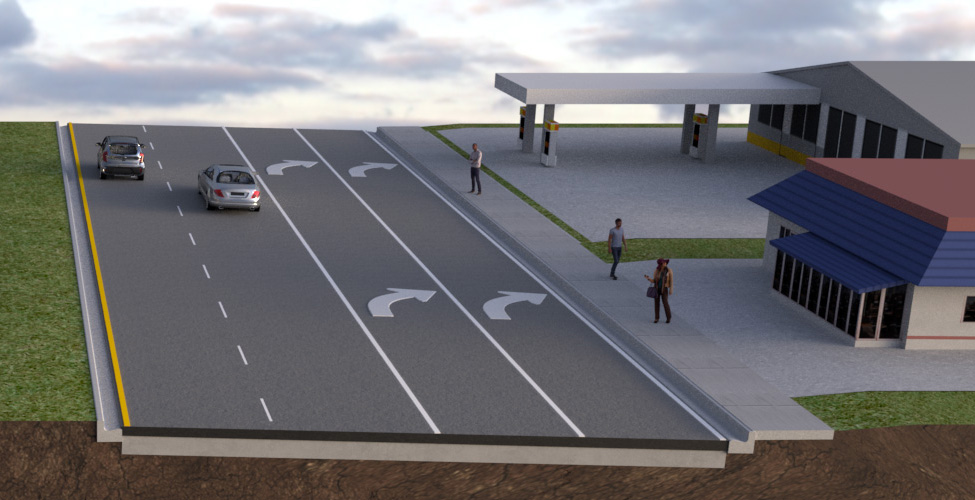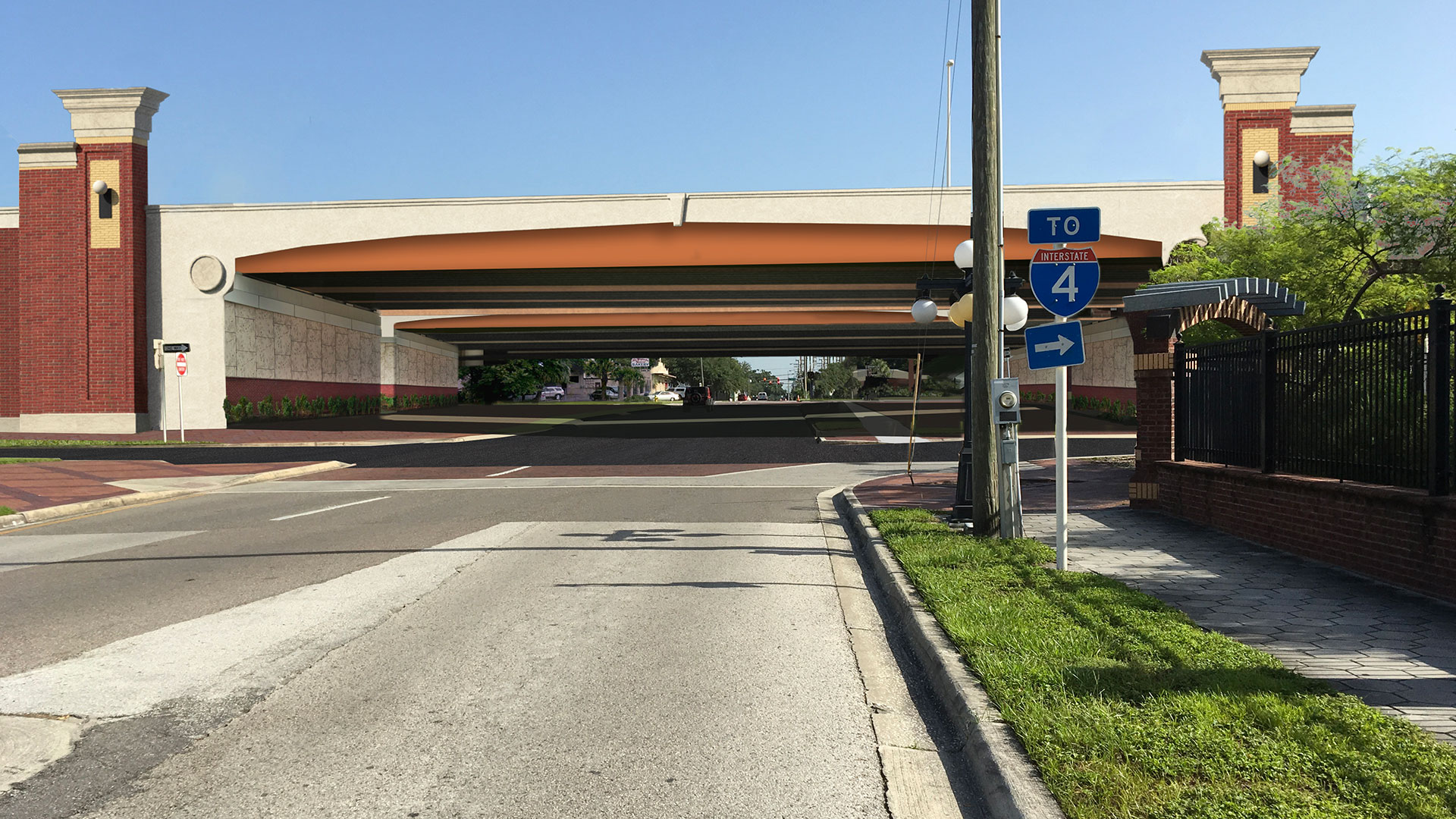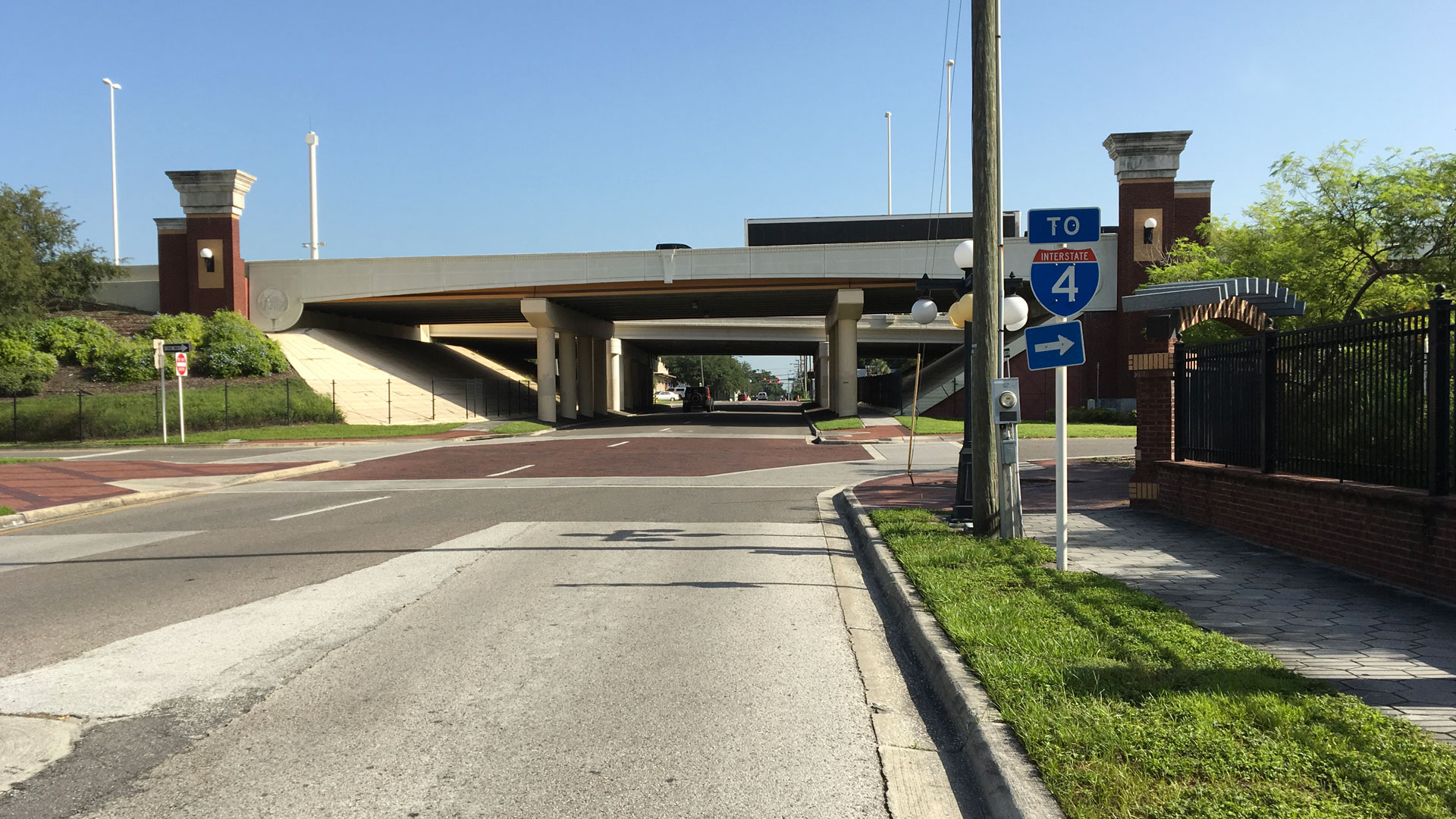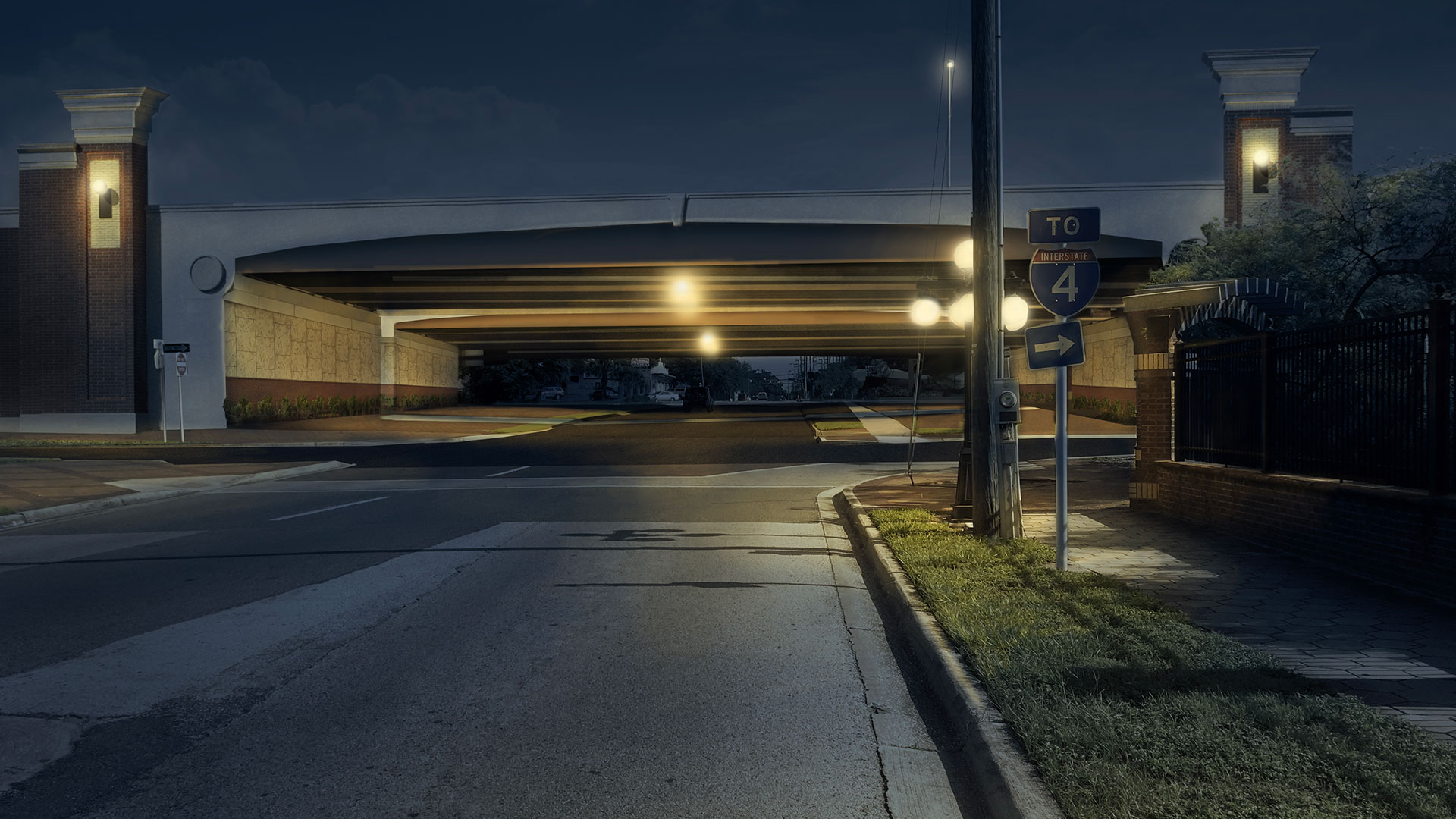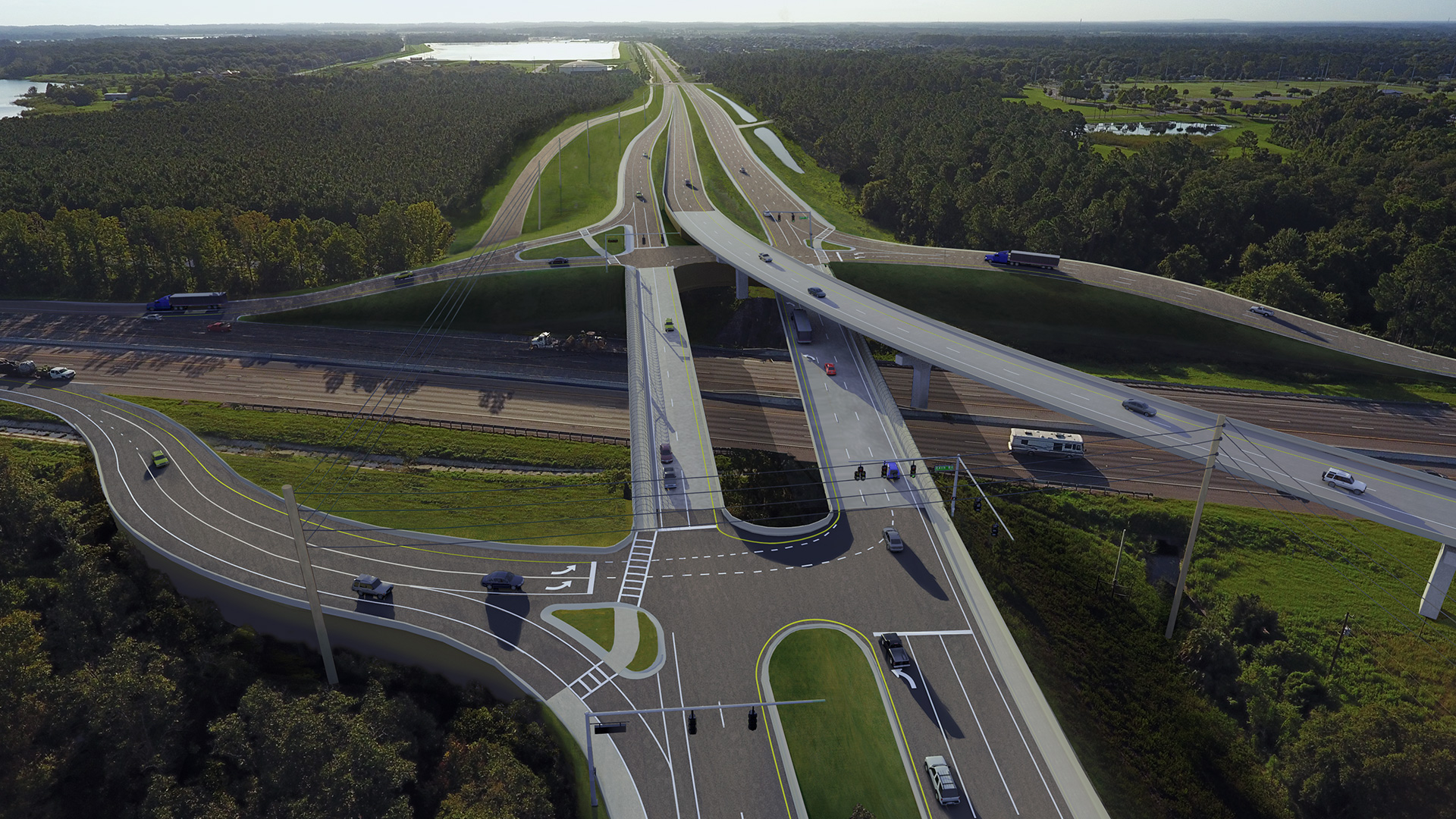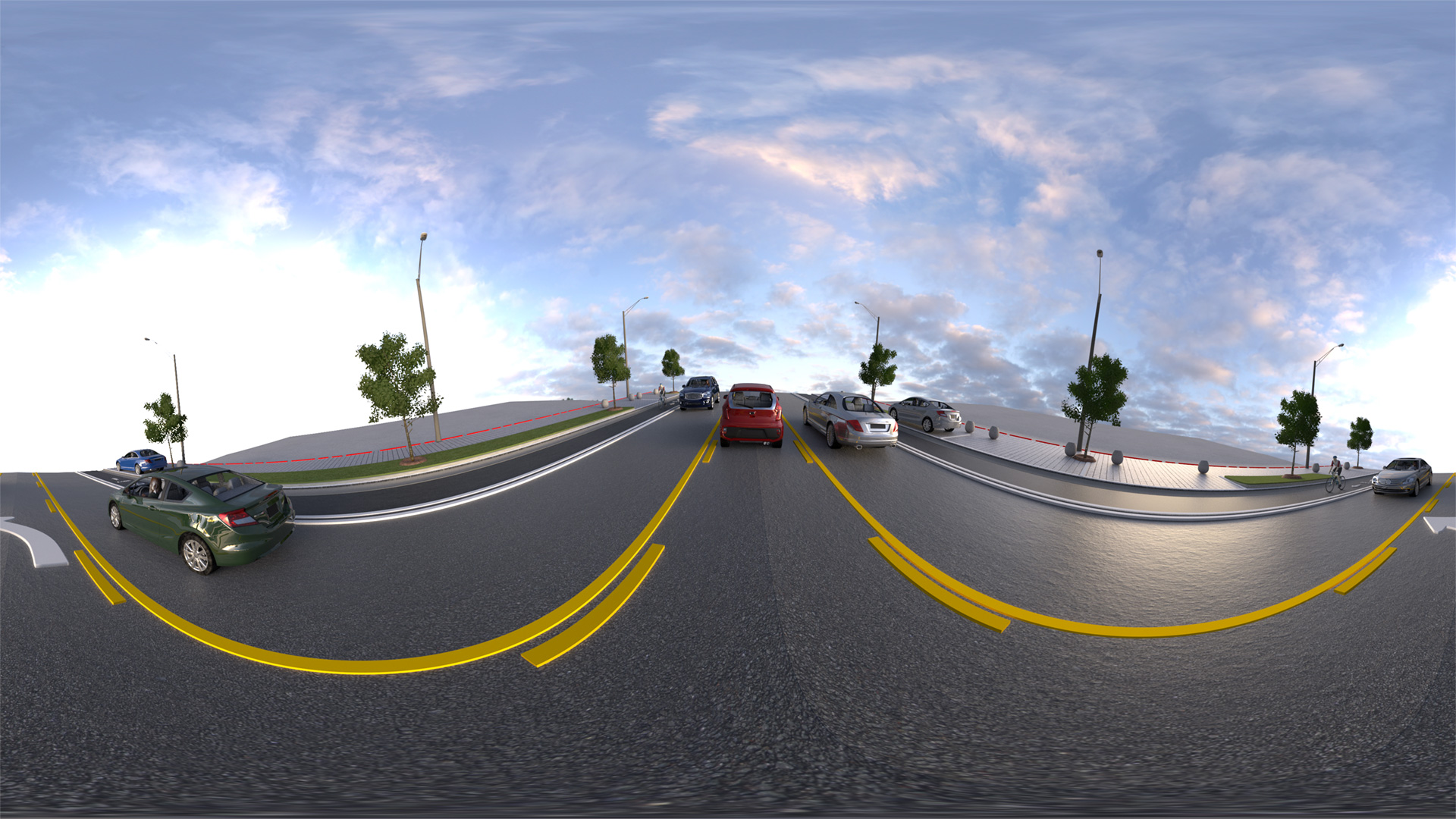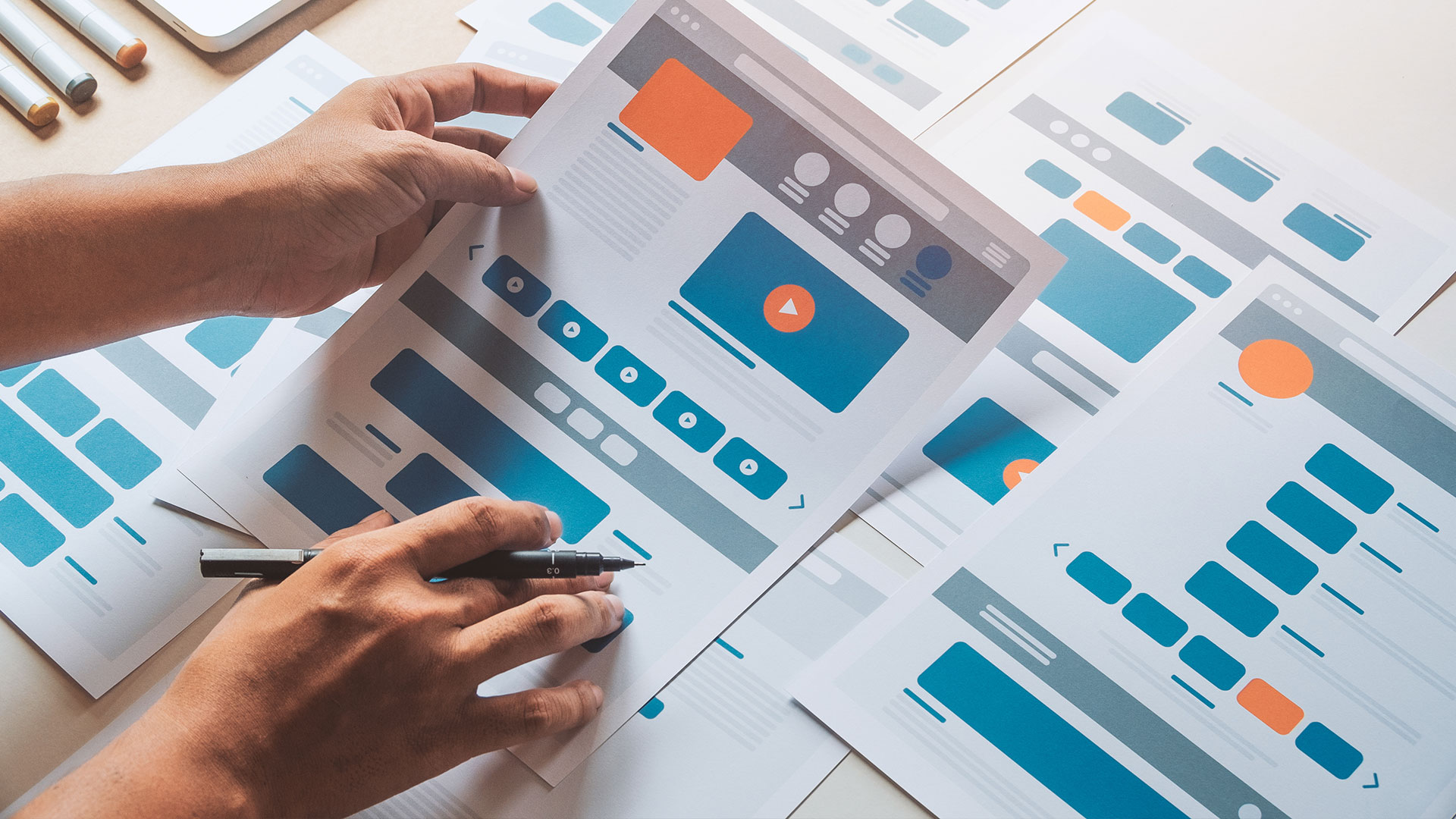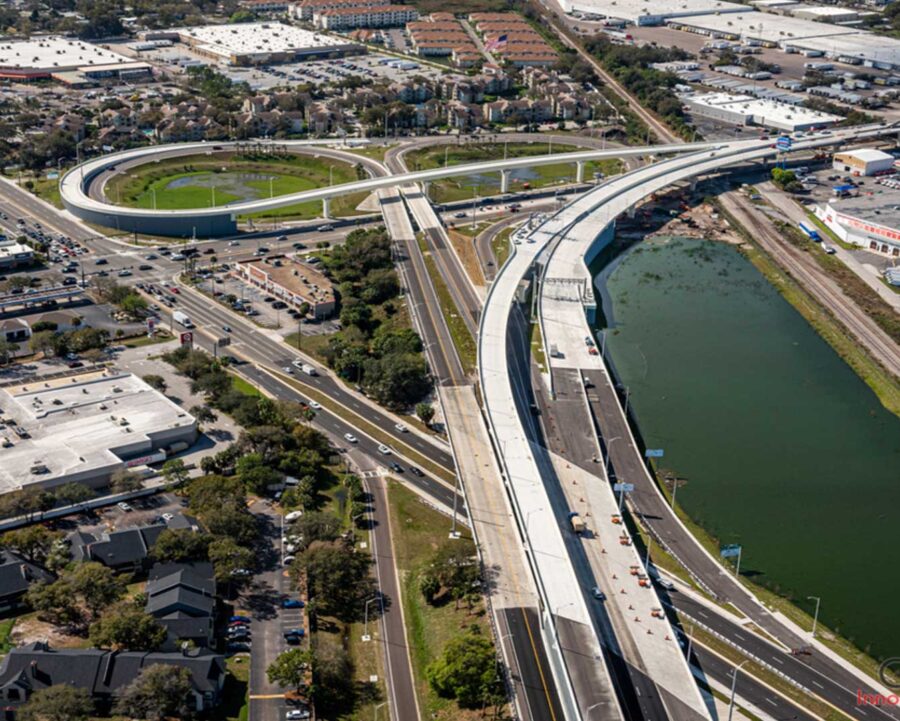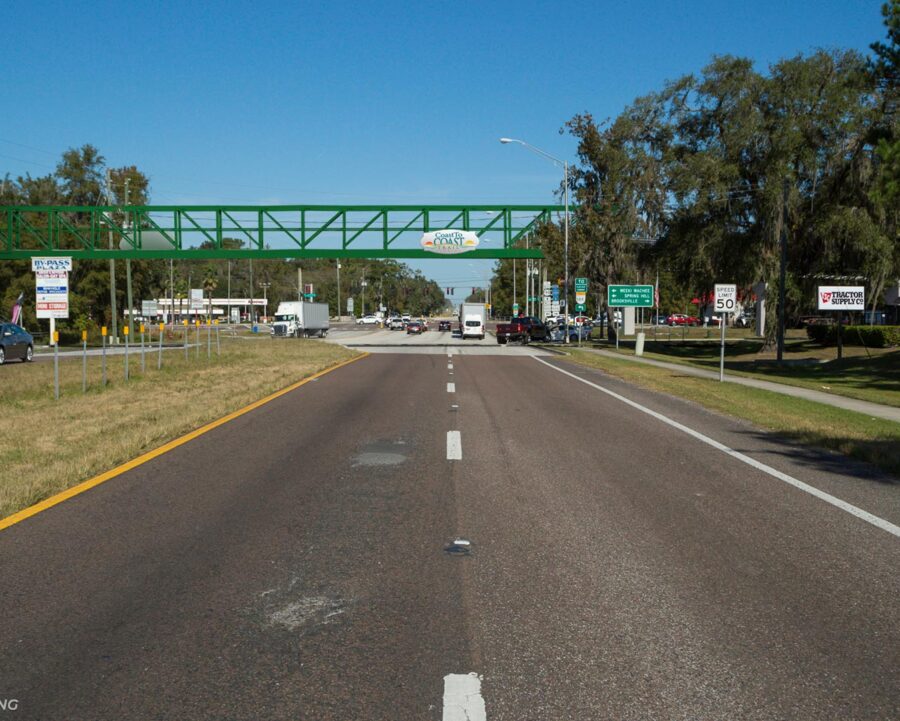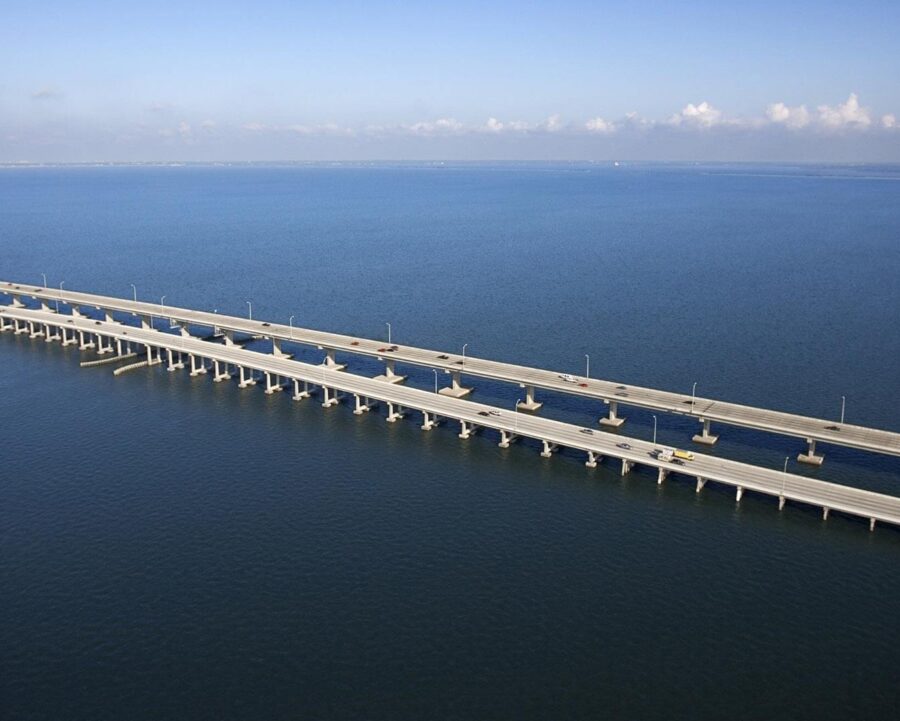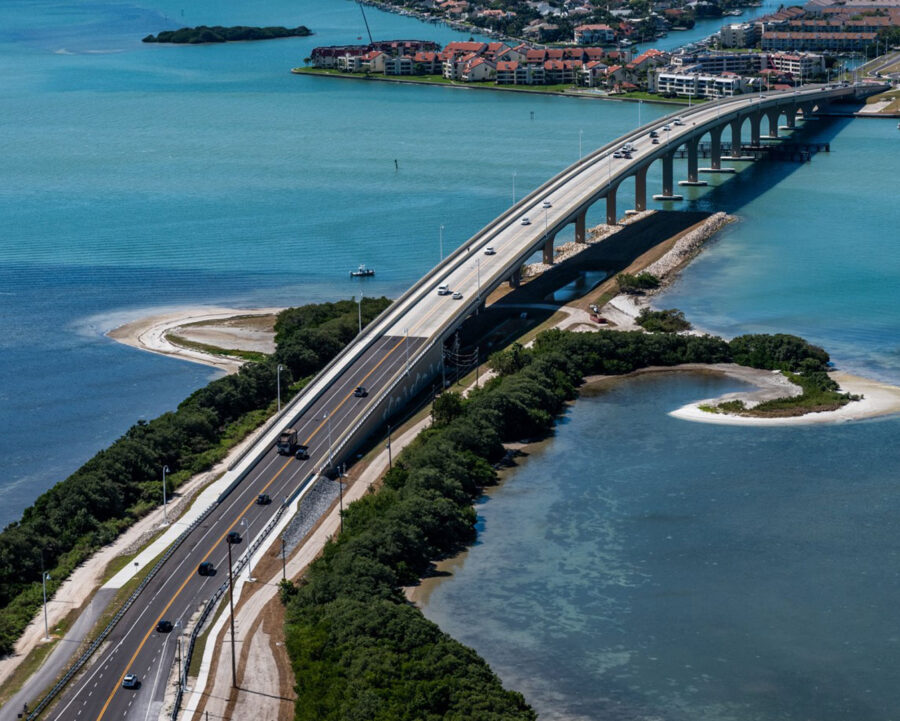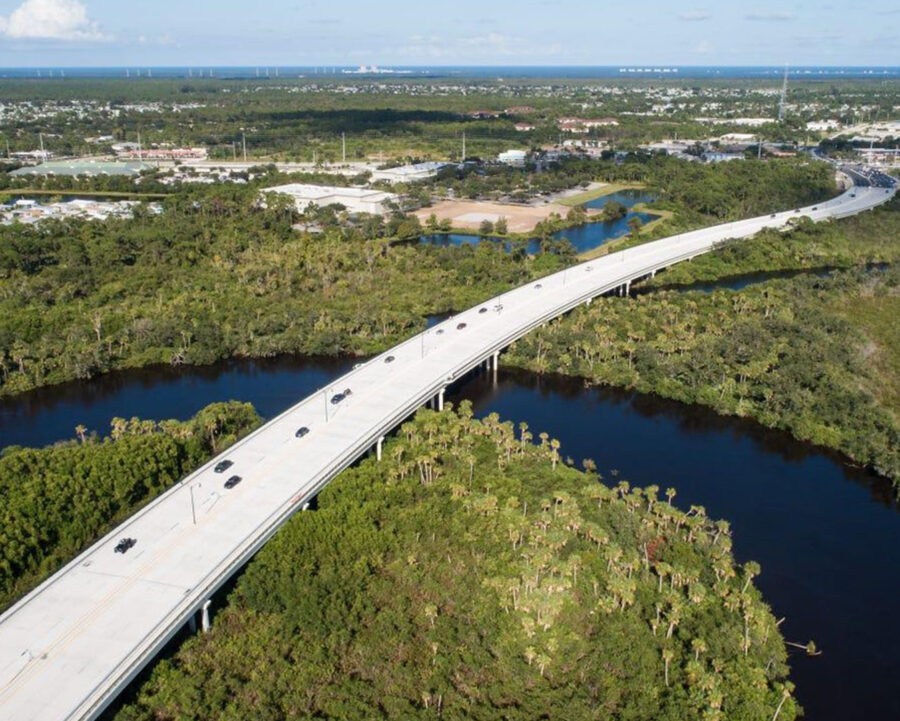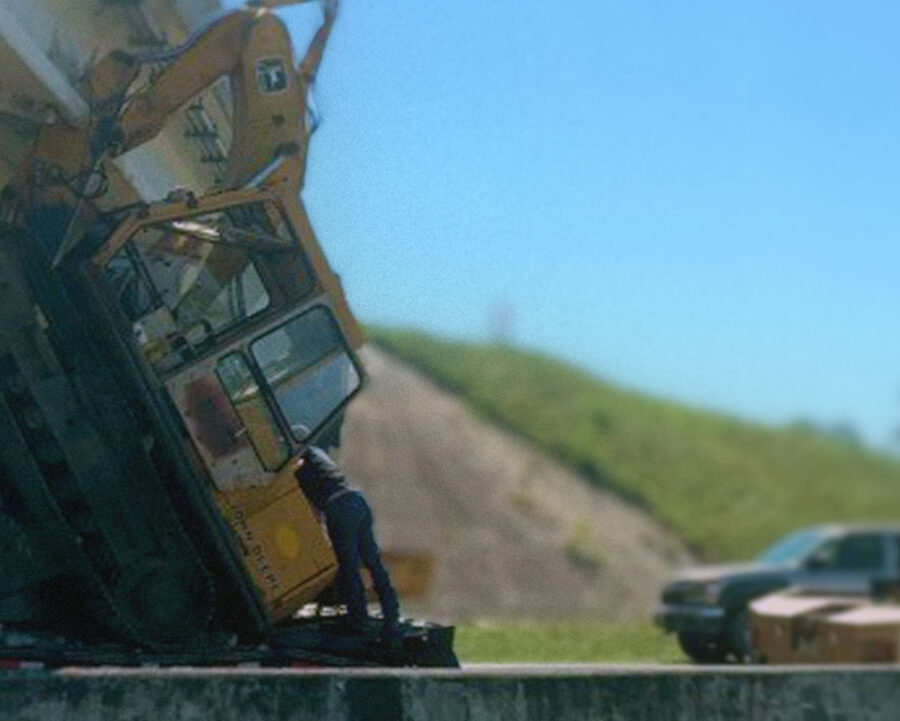Enhanced Typical Sections
An enhanced typical is created to give a better understanding of what a section of a corridor might look like in the real world. The advantage of an enhanced typical over a standard typical is that a higher level of detail can be included to show grass, sidewalks, striping, curb and gutter, bike lines, and any other information needed. Each image can be rendered at any size to accommodate large format print needs.
- Gives a better visual understanding of corridor
- Can be rendered at any size
Enhanced Typical Sections
An enhanced typical is created to give a better understanding of what a section of a corridor might look like in the real world. The advantage of an enhanced typical over a standard typical is that a higher level of detail can be included to show grass, sidewalks, striping, curb and gutter, bike lines, and any other information needed. Each image can be rendered at any size to accommodate large format print needs.
- Gives a better visual understanding of corridor
- Can be rendered at any size
Photo Simulations / Before-And-Afters
A “before-and-after” is created to show the differences between existing conditions and proposed changes. These images can be compared side by side to give a better understanding of the proposed concept.
A photo of existing conditions is used as the “before” picture. The proposed changes are then created in a digital environment and aligned to match the camera angle of the original photo. These graphics are then composited on top of the before picture to produce the “after” image.
- Side-by-side comparison communicates changes effectively
- Professional, high quality digital compositions
Photo Simulations / Before-And-Afters
A “before-and-after” is created to show the differences between existing conditions and proposed changes. These images can be compared side by side to give a better understanding of the proposed concept.
A photo of existing conditions is used as the “before” picture. The proposed changes are then created in a digital environment and aligned to match the camera angle of the original photo. These graphics are then composited on top of the before picture to produce the “after” image.
- Side-by-side comparison communicates changes effectively
- Professional, high quality digital compositions
3D Modeling
3D modeling is used to create highly realistic objects or environments that can be viewed from any angle and be rendered at any print size. 3D modeling is often utilized when an existing photo is not available for a before-and-after and the entire roadway, corridor, or environment must be constructed from scratch.
- Can be viewed from any angle
- Created using industry standard software
3D Modeling
3D modeling is used to create highly realistic objects or environments that can be viewed from any angle and be rendered at any print size. 3D modeling is often utilized when an existing photo is not available for a before-and-after and the entire roadway, corridor, or environment must be constructed from scratch.
- Can be viewed from any angle
- Created using industry standard software
Fly-Throughs
A fly-through is a movie that is shown from the camera’s point of view as it moves through virtual 3D space. This movie gives the viewer a sense of what the environment might look like as if they were driving through the corridor in a car or flying by in a helicopter. A fly-through will take the viewer down a specific path, highlighting points of interest. This is one of the best tools available for communicating a concept, product, roadway, bridge, park, or corridor in a clear and effective manner. Fly-throughs can be burned to DVDs, CDs, viewed on web pages, television programs, and included in PowerPoint presentations for public meetings and proposals.
- Best way to communicate a concept
- Created using industry standard software
Fly-Throughs
A fly-through is a movie that is shown from the camera’s point of view as it moves through virtual 3D space. This movie gives the viewer a sense of what the environment might look like as if they were driving through the corridor in a car or flying by in a helicopter. A fly-through will take the viewer down a specific path, highlighting points of interest. This is one of the best tools available for communicating a concept, product, roadway, bridge, park, or corridor in a clear and effective manner. Fly-throughs can be burned to DVDs, CDs, viewed on web pages, television programs, and included in PowerPoint presentations for public meetings and proposals.
- Best way to communicate a concept
- Created using industry standard software
VR / Spherical Renderings
Spherical renderings are interactive panorama images that can be viewed using immersive technology, such as the Oculus Rift and Google Cardboard, or simply through a web-based viewer using a mouse and keyboard. They can be useful when showcasing a project for public outreach activities and presentations, since they allow the user to explore the environment for themselves.
- Can be used with immersive technology such as Oculus Rift, HTC Vive, Google VR and more
- Built using industry standard software, such as Maya, Substance and LumenRT
VR / Spherical Renderings
Spherical renderings are interactive panorama images that can be viewed using immersive technology, such as the Oculus Rift and Google Cardboard, or simply through a web-based viewer using a mouse and keyboard. They can be useful when showcasing a project for public outreach activities and presentations, since they allow the user to explore the environment for themselves.
- Can be used with immersive technology such as Oculus Rift, HTC Vive, Google VR and more
- Built using industry standard software, such as Maya, Substance and LumenRT
Web Design
We employ the latest HTML and CSS methods to ensure the site conforms with modern design practices. This includes adding SSL security to ensure information shared on the website is safe and secure - something that is now required by most major browsers and search engines in order to avoid search ranking penalties and security risk messages. Our websites are also designed using a responsive fluid 12 column grid, which allows elements on the page, such as text/heading sizes, image sizes, text structure, etc., to change position and size to adapt to the wide range of mobile devices, like smart phones, tablets, etc., as well as desktop/laptop computers.
- Built using the latest technology and methods
- Hand-coded and fully customized
- Built to fit all devices
- Fluid grid-based design architecture
- Accessibility features available for ADA compliance
Web Design
We employ the latest HTML and CSS methods to ensure the site conforms with modern design practices. This includes adding SSL security to ensure information shared on the website is safe and secure - something that is now required by most major browsers and search engines in order to avoid search ranking penalties and security risk messages. Our websites are also designed using a responsive fluid 12 column grid, which allows elements on the page, such as text/heading sizes, image sizes, text structure, etc., to change position and size to adapt to the wide range of mobile devices, like smart phones, tablets, etc., as well as desktop/laptop computers.
- Built using the latest technology and methods
- Hand-coded and fully customized
- Built to fit all devices
- Fluid grid-based design architecture
- Accessibility features available for ADA compliance
Making a Website Accessible to Everyone
Over the past few years website accessibility has become a major subject of discussion and is quickly becoming a requirement for government and public outreach websites. American utilizes various accessibility auditing tools to review HTML coding and improve compliance with current Web Content Accessibility Guidelines (WCAG 2.1). American also integrates website plugins to provide accessibility tools for disabled users and increase compliance with WCAG 2.1, ATAG 2.0, ADA, and Section 508 requirements.
Recent Projects
Hillsborough & Pinellas Counties, Florida
City of Port St. Lucie, Florida
Districtwide | FDOT District 3

